Ants are fascinating creatures that have fascinated humans for centuries. From their intricate social structures to their relentless foraging patterns, ants have piqued our curiosity and sometimes caused frustration when they invade our homes and gardens.
When faced with an ant problem, many people seek effective and environmentally friendly methods to control these tiny invaders. It is this curiosity that has led us to explore the potential of baking soda as a natural ant killer.
The potential of baking soda as an ant killer
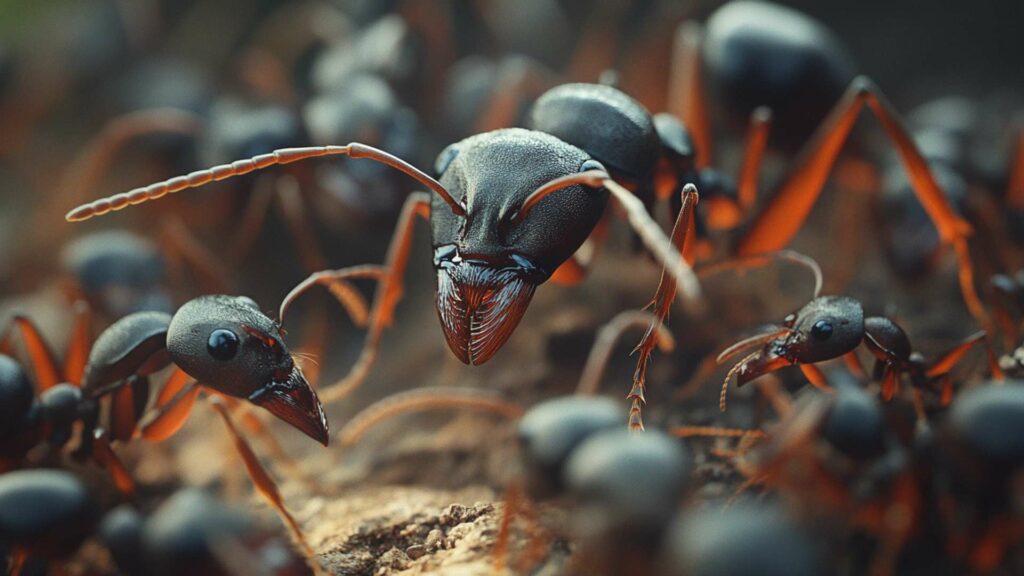
Baking soda, a common kitchen staple known scientifically as sodium bicarbonate, has long been used for various purposes around the house. As it turns out, this versatile white powder may also hold the key to deterring ants from invading your living spaces.
The idea behind using baking soda to kill ants lies in its ability to alter the pH balance within their bodies when ingested or in direct contact with them. While numerous chemical pesticides are available on the market for ant control, many individuals prefer more natural alternatives due to concerns about their impact on the environment or the safety of children and pets.
Baking soda offers a non-toxic option that can be easily mixed with other ingredients found in most households, making it an attractive choice for those seeking an eco-friendly solution. However, before diving into how baking soda affects ants and its practical application as an ant killer, let’s take a closer look at these fascinating creatures themselves—their behavior and social structure—to better understand why they can become such persistent pests.
Understanding Ants and Their Behavior
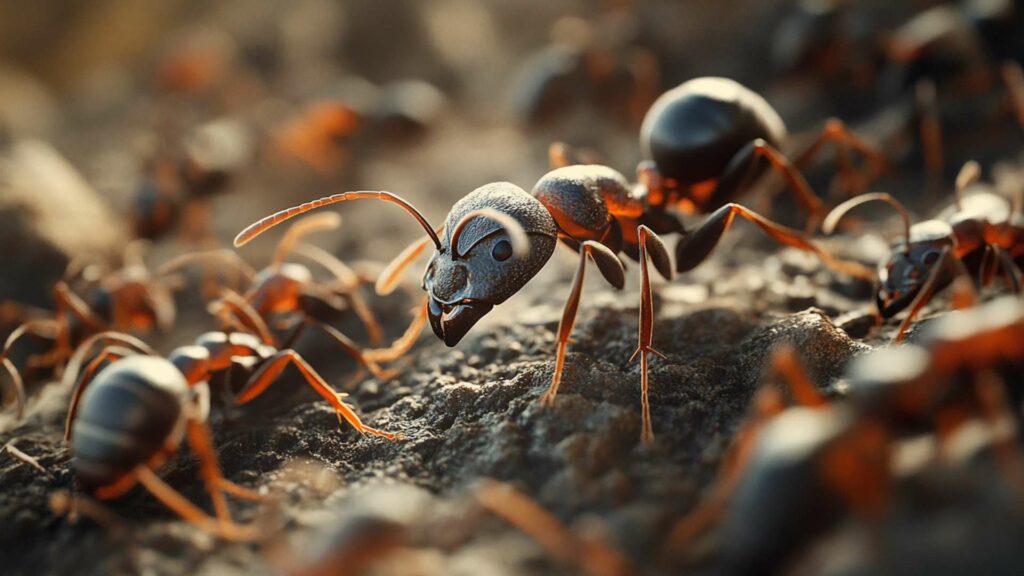
The Tiny Architects of Nature
Ants, those industrious little creatures that scurry across our kitchen countertops and invade our picnics, are more fascinating than we often give them credit for. Let’s take a closer look at these tiny architects of nature by exploring their anatomy and social structure.
Ants belong to the order Hymenoptera, which includes other insects like bees and wasps. Their bodies consist of three main parts: the head, thorax, and abdomen.
With six legs attached to their thorax, they scuttle about with remarkable speed and agility. Ants also possess powerful jaws (mandibles) that allow them to carry objects many times their own body weight—truly an impressive feat!
A Society Like No Other
Ants are not solitary insects; instead, they live in highly organized colonies composed of thousands or even millions of individuals working together as one cohesive unit. Within a colony, ants assume various roles such as workers, soldiers, queens, and drones.
This division of labor ensures the survival and success of the entire colony. The social structure of the ant mound is centered around a queen ant who lays eggs to perpetuate the growth of the colony.
The worker ants are responsible for tasks such as foraging for food, building nests or tunnels (also known as ant hills), caring for larvae, and protecting the whole ant nest from predators or intruders – quite a busy bunch! It’s this intricate web of cooperation that enables ants to thrive in diverse environments.
Marching on Food Trails
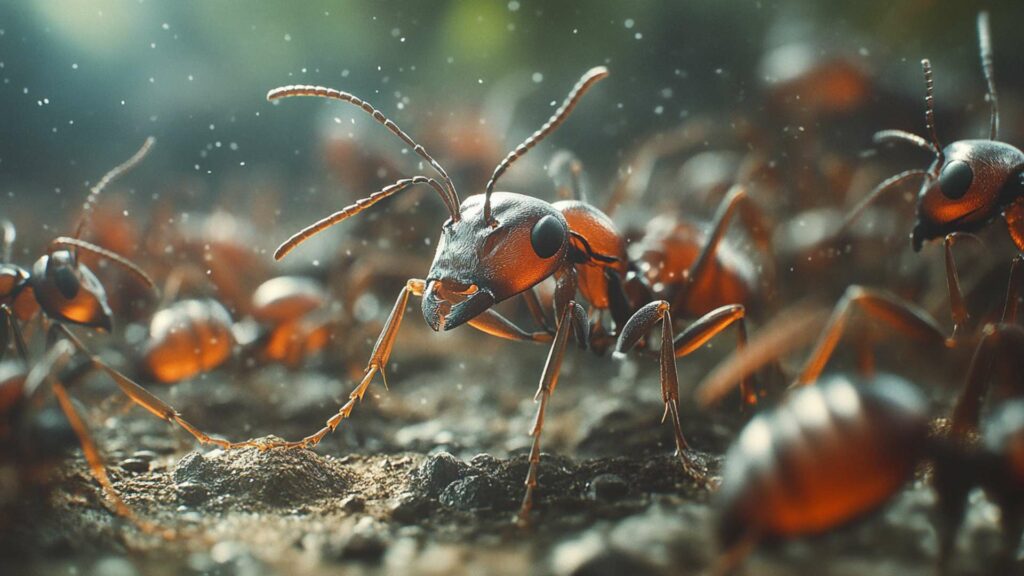
To sustain their colonies’ voracious appetites, ants follow well-defined foraging patterns and exhibit distinct food preferences. Most ants are omnivorous critters that feed on both plant material and protein sources like insects or other small creatures unlucky enough to cross their path.
When an ant discovers a food source, it leaves behind a trail of pheromones to guide its fellow nest-mates to the bounty. This chemical signaling system efficiently coordinates the efforts of the entire ant colony in their search for sustenance.
It’s worth noting that ants are especially attracted to sweet substances like sugar, honey, and fruit, making our kitchens an irresistible paradise for these tiny scavengers. So there you have it—a glimpse into the fascinating world of ants and their intricate behavior.
Understanding their anatomy, social structure, and foraging patterns lays the foundation for exploring how baking soda may disrupt their harmonious existence. But before we delve into that realm, let’s explore the science behind this seemingly ordinary kitchen staple and its potential prowess in ant control.
The Science Behind Baking Soda’s Effect on Ants
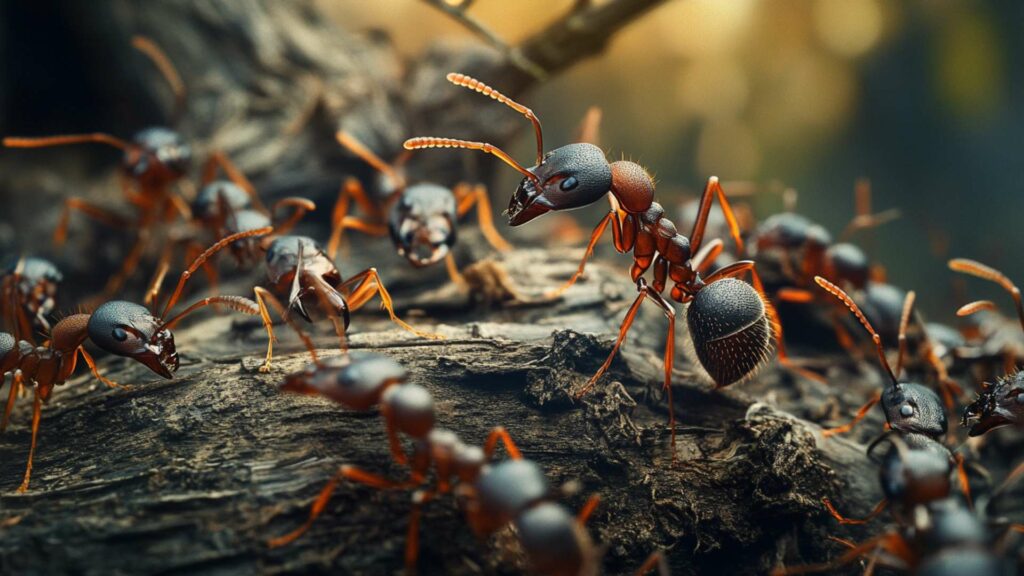
Chemical Composition of Baking Soda (Sodium Bicarbonate)
To understand how baking soda can potentially kill ants, it’s important to delve into its chemical makeup. Baking soda, scientifically known as sodium bicarbonate (NaHCO3), is a white crystalline compound composed of sodium ions, bicarbonate ions, and water molecules. Its versatility makes it a staple in many households for various purposes, including cooking, cleaning, and yes, even pest control.
How Baking Soda Disrupts Ants’ Internal pH Balance
Ants have an innate ability to maintain a particular pH level within their bodies. This balance is crucial for their survival and proper bodily functions.
When ants come into contact with baking soda, the alkaline nature of sodium bicarbonate interferes with their internal pH balance. The baking soda essentially neutralizes the acidic environment within the ant’s body.
The Impact of Altered pH on Ants’ Digestive System
Once ants ingest baking soda or come into direct contact with it, their altered internal pH wreaks havoc on their digestive system. The digestive enzymes that are crucial for breaking down food become disrupted due to the change in acidity levels caused by the baking soda.
This disruption impairs the ants’ ability to effectively digest food and absorb necessary nutrients. In addition to affecting digestion mechanisms, altered internal pH also leads to a build-up of gas within the ant’s body.
This gas formation exerted by the reaction between stomach acids and baking soda disturbs normal bodily functions and can cause discomfort or even death for these pesky little creatures. Although there is limited scientific evidence specifically studying baking soda’s impact on ants’ digestive systems, anecdotal accounts from people who have used this method suggest that it can be an effective natural remedy to get rid of ants without resorting to harsh chemicals or commercial products.
Effectiveness of Baking Soda as an Ant Killer
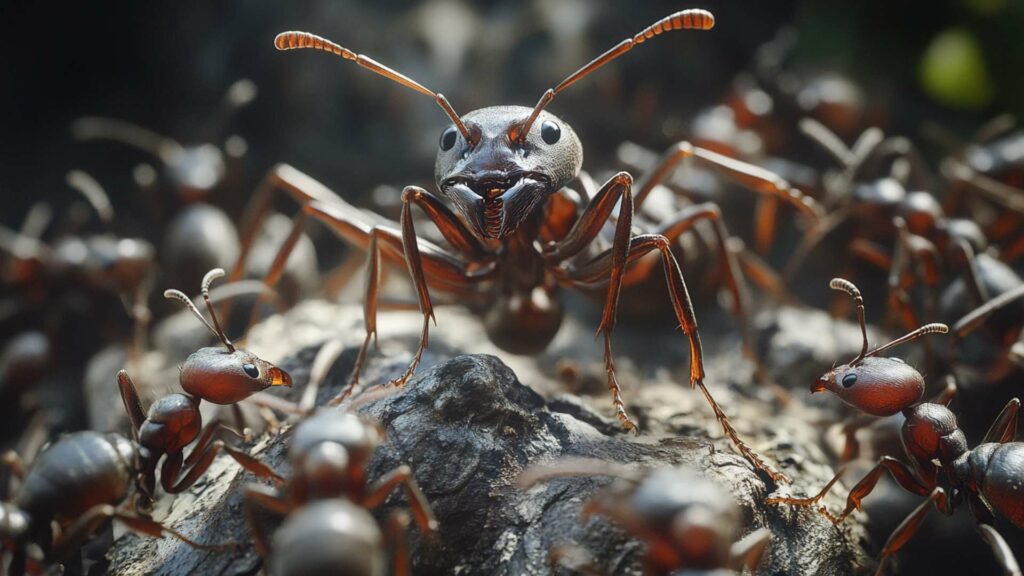
Laboratory Studies Evaluating Baking Soda’s Efficacy against Ants
In the quest to find effective and natural solutions for combating ant infestations, researchers have turned their attention to the potential of baking soda as an ant killer. Numerous laboratory studies have been conducted to evaluate the efficiency of this common household ingredient in eradicating ants.
One aspect that has been explored is direct contact with baking soda to kill ants. The results have been quite promising, showing that when ants come into direct contact with baking soda, it can significantly impact their ability to survive.
Research Findings on Direct Contact with Baking Soda
The research findings indicate that when ants come into contact with baking soda, it disrupts their exoskeleton and causes severe dehydration. The tiny granules of baking soda penetrate the protective layer of the ant’s body, absorbing moisture and altering its internal pH balance. This process not only weakens their outer shell but also affects vital bodily functions such as respiration.
Consequently, ants that come into contact with baking soda are rendered immobile or perish shortly after exposure. Additionally, studies have revealed that direct contact with baking soda affects not only individual ants but also has a broader impact on their colonies.
When worker ants bring traces of baking soda back to their nest or communicate through chemical signals within the colony, other ants may inadvertently come into contact with these traces as well. This unintentional exposure further spreads the detrimental effects of baking soda within the ant population.
Studies Observing the Ingestion of Baking Soda by Ants
Besides direct contact, researchers have also investigated whether ingesting baking soda has any adverse effects on ants’ digestive systems and overall survival rate. Findings from these studies show that when foraging worker ants consume food laced with baking soda, it disrupts their digestive processes. Baking soda’s alkaline properties interfere with the acidic environment in the ant’s stomach, leading to an imbalance that affects their ability to break down and absorb nutrients properly.
As a result, ants that consume baking soda-laden bait tend to suffer from severe gastrointestinal distress, ultimately leading to their demise. These laboratory studies collectively suggest that baking soda has demonstrated promising potential as an effective ant killer.
However, it is important to note that while baking soda can significantly impact ants’ survival when they come into contact with it or ingest it, its effectiveness may vary depending on factors such as ant species and colony size. Therefore, proper bait placement and persistence are crucial when using baking soda as a natural ant control method.
Practical Application and Usage Tips for Using Baking Soda Against Ants
Identifying Areas Prone to Ant Infestation in Homes or Gardens
When it comes to dealing with those pesky little fire ants, identifying the areas where they are likely to infiltrate is crucial.
Most ants follow specific patterns, often using identifiable entry points into households. Common entry points include cracks in windowsills, gaps around doors, and openings in walls or flooring.
These tiny insects have an uncanny ability to squeeze their way through the tiniest crevices, seeking food sources within our homes. Moreover, outdoor areas near plants or decaying matter serve as potential nests for ants.
Preparing Homemade Bait Using Baking Soda and Other Ingredients
Now that you’ve identified the potential ant infestation hotspots around your home or garden, it’s time to prepare a homemade bait that includes trusty baking soda.
One simple yet effective recipe involves combining baking soda with sugar and water. Start by dissolving equal parts of powdered sugar, and baking soda in warm water until well mixed.
The sweetness of sugar acts as a lure while baking soda disrupts ants’ digestive systems upon ingestion. To enhance bait attractiveness more ants, consider incorporating other ingredients such as peanut butter or honey into the mixture.
The irresistible aroma of these kitchen staples will entice the ants further. Get creative with your bait recipe but remember that whatever ingredients you use should be securely blended with baking soda.
Implementing Strategies to Lure and Trap Ants with the Bait Mixture
Now that your homemade ant bait is ready, it’s time for strategic placement! Optimal positioning is key to maximizing its effectiveness against ant infestations.
Place small amounts of the bait in a shallow container or containers, such as jar lids, near known ant trails or areas where you suspect their presence. This allows the ants to easily access the bait and carry it back to their nest, spreading its effects to other ants.
To deter ants from venturing into unwanted areas, create barriers using dish soap mixed with water. This solution disrupts ant trail and their scent trails and discourages future invasions.
Additionally, regularly clean up spills and food crumbs promptly to eliminate temptations for these natural scavengers. Remember to replace the bait mixture regularly, as it can dry out or lose its potency over time.
This ensures that a fresh supply is readily available for any unsuspecting ants that stumble upon your culinary trap. By employing these practical tips and utilizing baking soda as part of your ant control arsenal, you can set yourself on the path towards reclaiming your home from these unwelcome intruders.
Common Misconceptions about Using Baking Soda against Ants
Addressing Claims that Suggest Alternative Uses for Killing or Repelling Ants
Misconception 1: Baking soda can be used as a one-time solution to completely get rid of ants. While baking soda has shown promising results in repelling and killing ants, it is not a foolproof method. Ant infestations often involve complex colonies with multiple entry points. Merely using a baking soda mixture once may have limited impact on the overall population. It is crucial to consider long-term strategies, such as addressing the root cause of the infestation and maintaining cleanliness to deter ants from returning. Misconception
2: Baking soda can directly exterminate all types of ants. While baking soda might be effective against certain ant species, it may not work equally well on others. Different types of ants have varying food preferences and behavior patterns, which can influence their response to the baking soda mixture. Therefore, it is important to understand the specific ant species causing trouble in order to determine if baking soda is an appropriate solution or if professional intervention might be necessary. Misconception
3: Mixing baking powder or soda with dish soap enhances its effectiveness against ants. There is a common belief that combining baking soda with dish soap creates a lethal combination for ants. However, this claim lacks scientific evidence. While dish soap can act as a surfactant that helps spread the sugar mixture around, its addition does not significantly enhance or improve the effectiveness of baking soda as an ant killer. Therefore, it is advisable to stick to simple recipes involving just equal parts of sugar and baking soda for optimal results.
Conclusion
While there are misconceptions surrounding the use of baking soda as an ant killer, it remains a viable non-toxic option worth exploring when dealing with ant infestations. Although baking soda has proven to disrupt ants’ digestive systems and alter their pH balance, it is not a magical solution that guarantees complete eradication of ants.
To effectively combat ant problems, it is important to complement the use of baking soda with other practical strategies such as identifying entry points, maintaining cleanliness, and implementing long-term prevention techniques. By understanding the limitations and misconceptions surrounding baking soda’s effectiveness against ants, we can make informed decisions on how using baking soda alters, or addresses ant infestations in our homes or gardens.
Let us remember that while baking soda serves as a powerful kitchen staple for various purposes, its role in ant control requires a comprehensive approach rather than relying solely on this humble ingredient. By adopting integrated pest management techniques and seeking professional help if needed, we can create an environment that discourages ants from invading our spaces while minimizing harm to ourselves and the environment.
Dissuade Ants with D-Termination: Las Vegas’ Foremost Pest Control Solution!
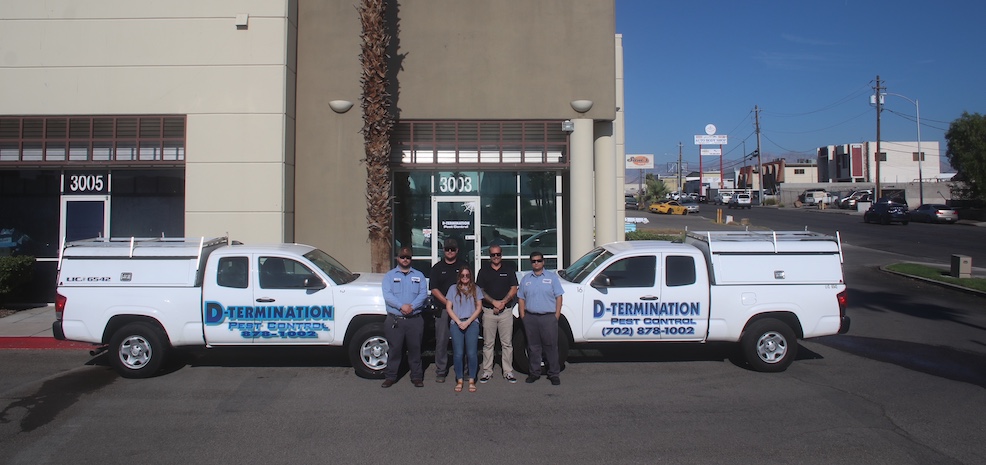
If you’re confronted with ant challenges, D-Termination is ready to help. Our highly skilled team excels at discouraging ants, rejuvenating cleanliness, and preserving the integrity of your surroundings. Bid farewell to ants—opt for D-Termination for effective pest control today!
Reach out to us at 702-919-6310 or visit dtermination.com to schedule your ant control service and regain your space from these unwanted pests.
Frequently Asked Questions:
Baking soda may take some time to kill ants, and it’s not the most effective method.
To use baking soda for ant control, mix it with powdered sugar and place it as bait.
The best homemade ant killer often involves sugar and borax baits.
While you can use baking soda, borax is generally more effective at killing ants.








